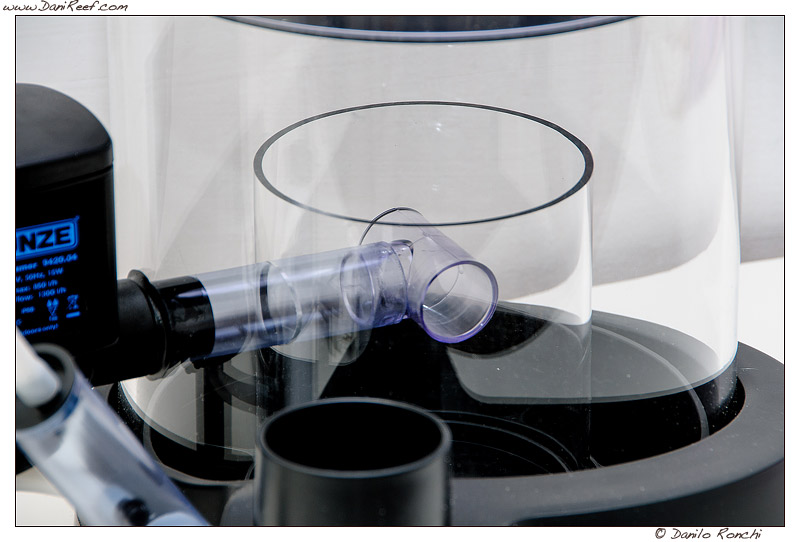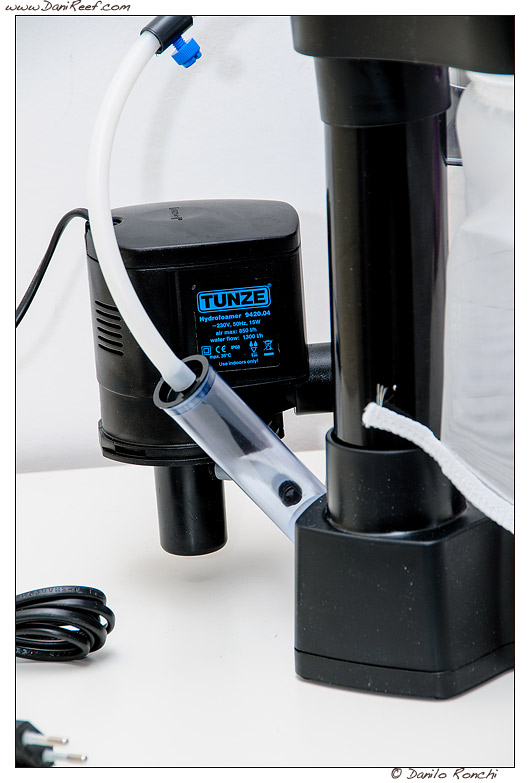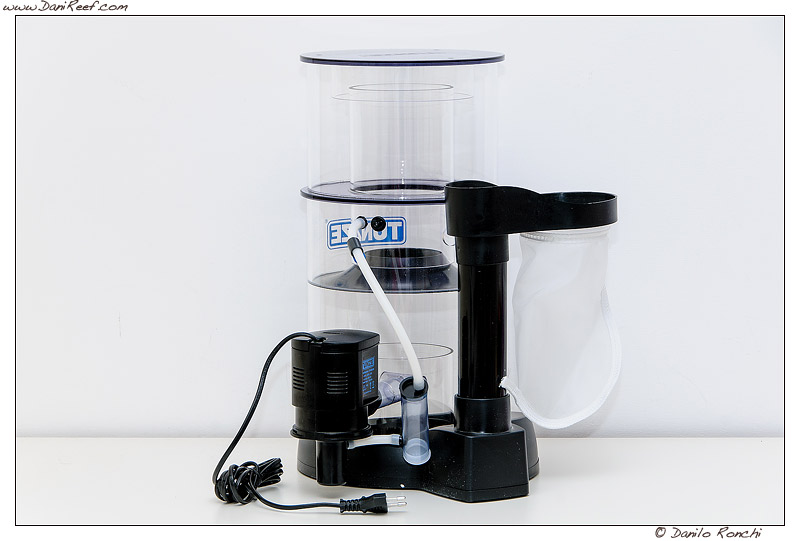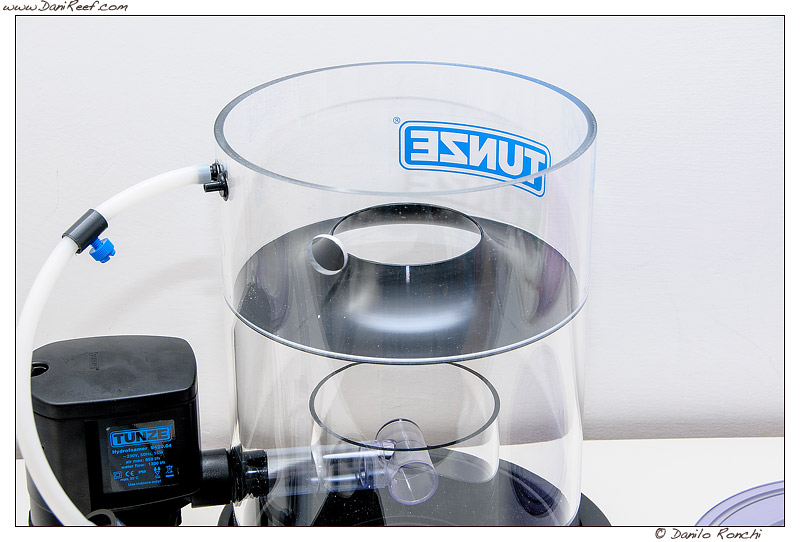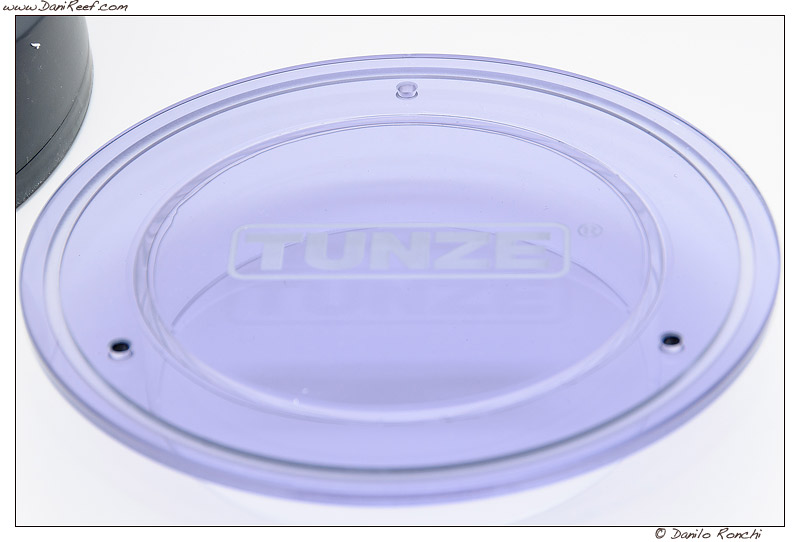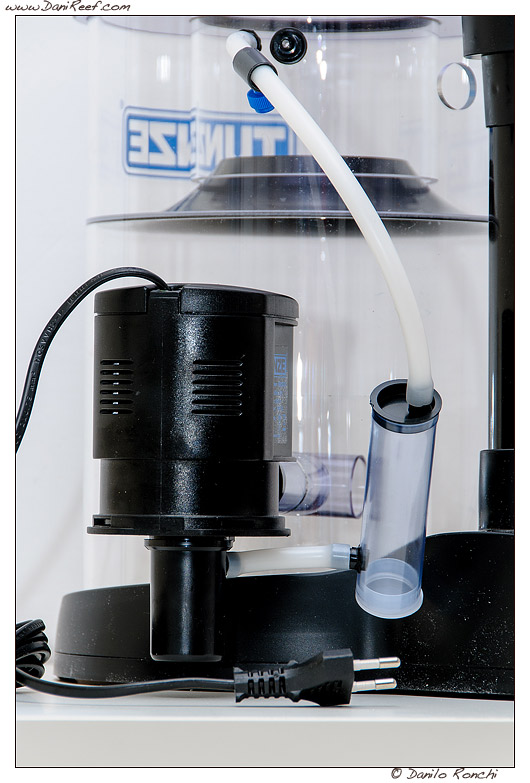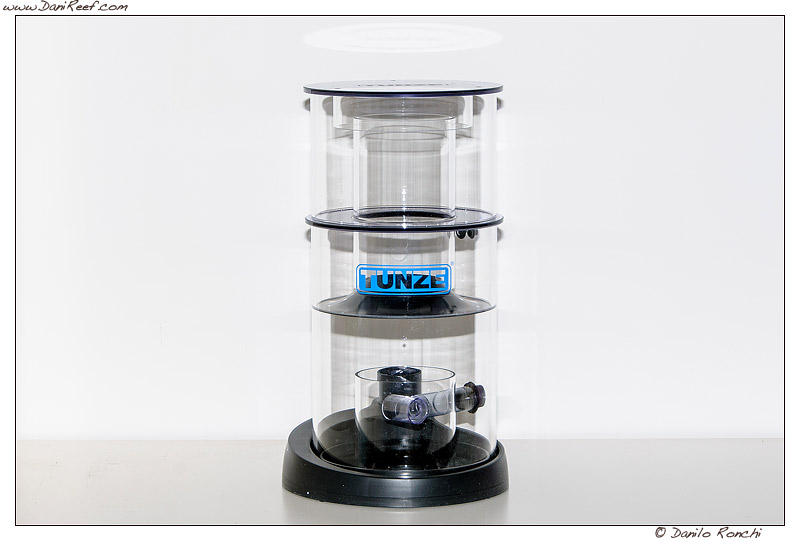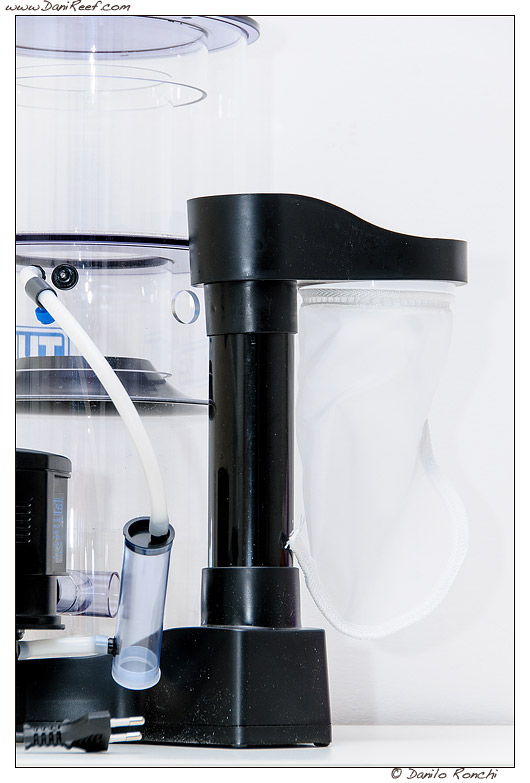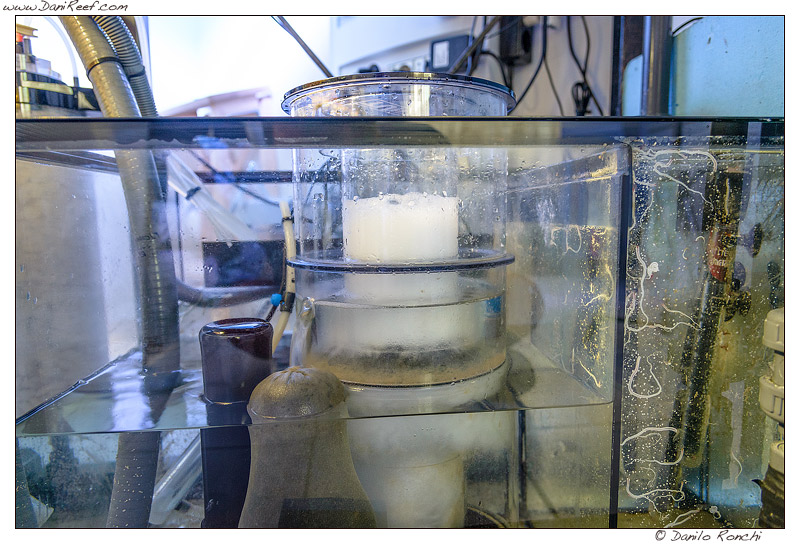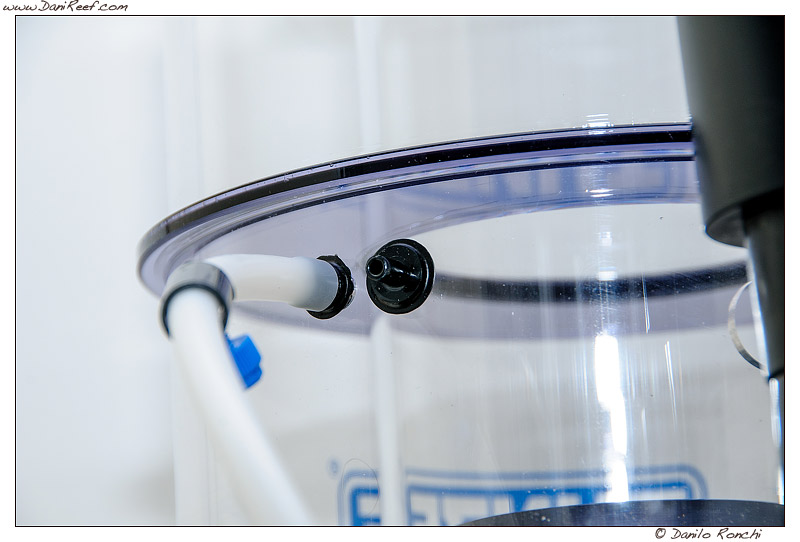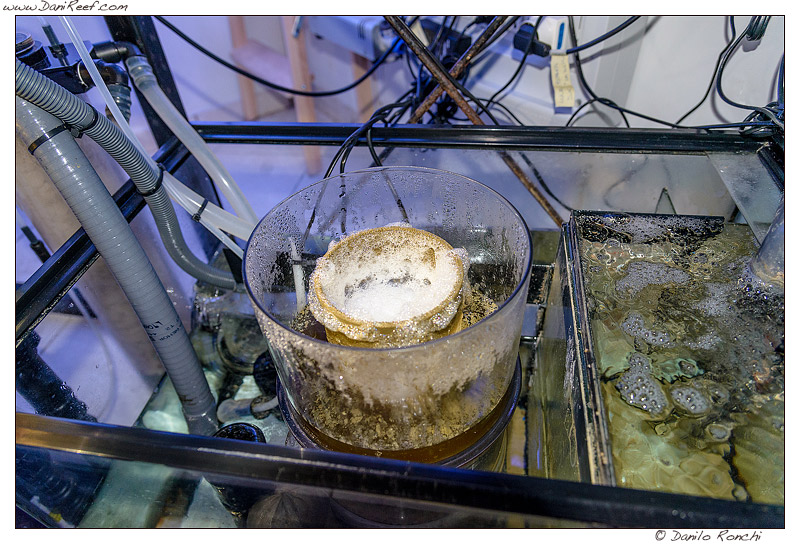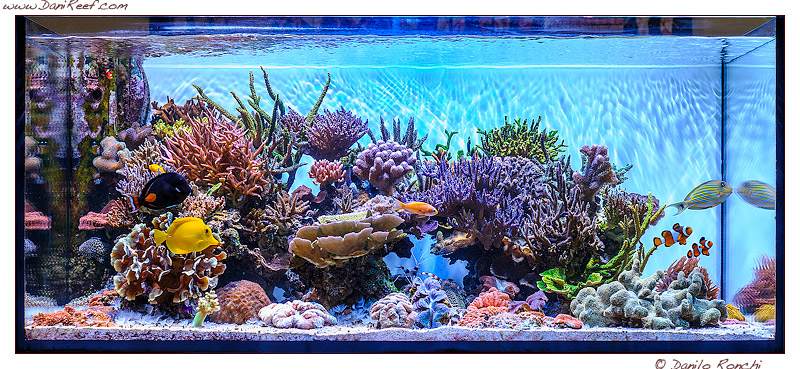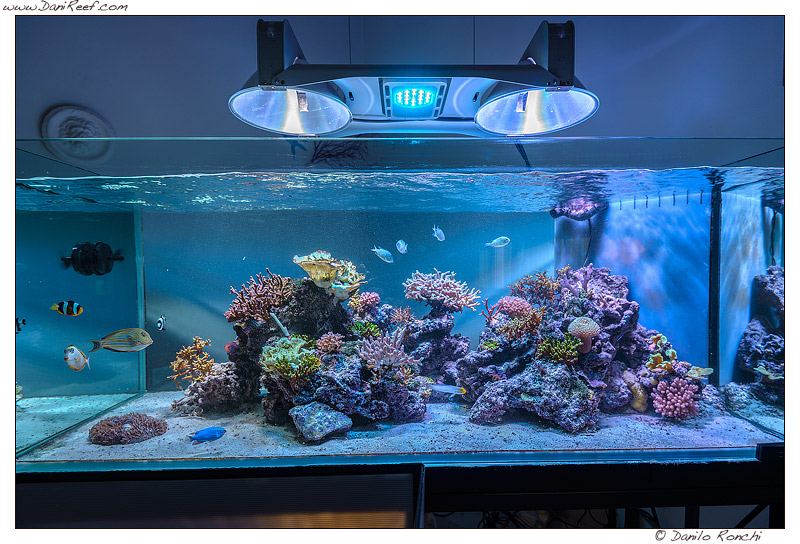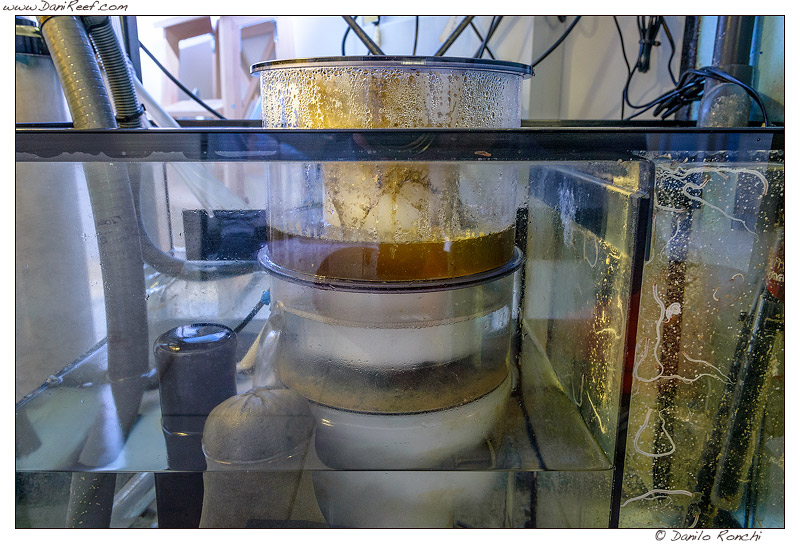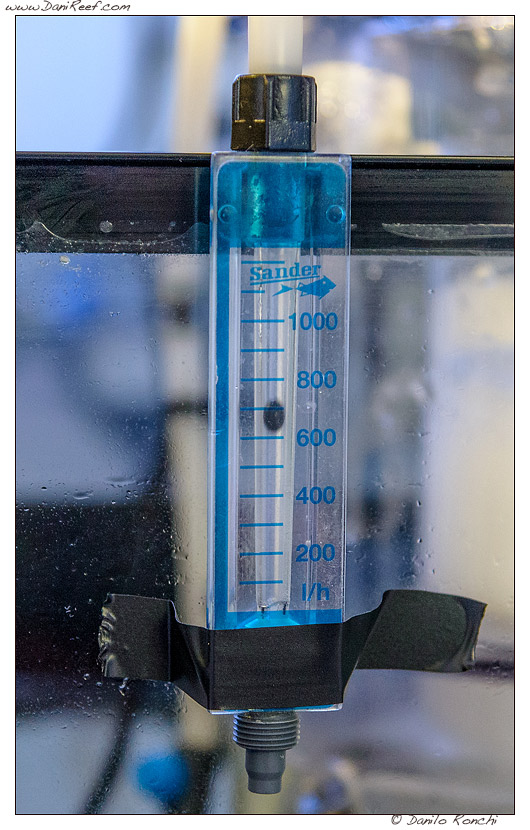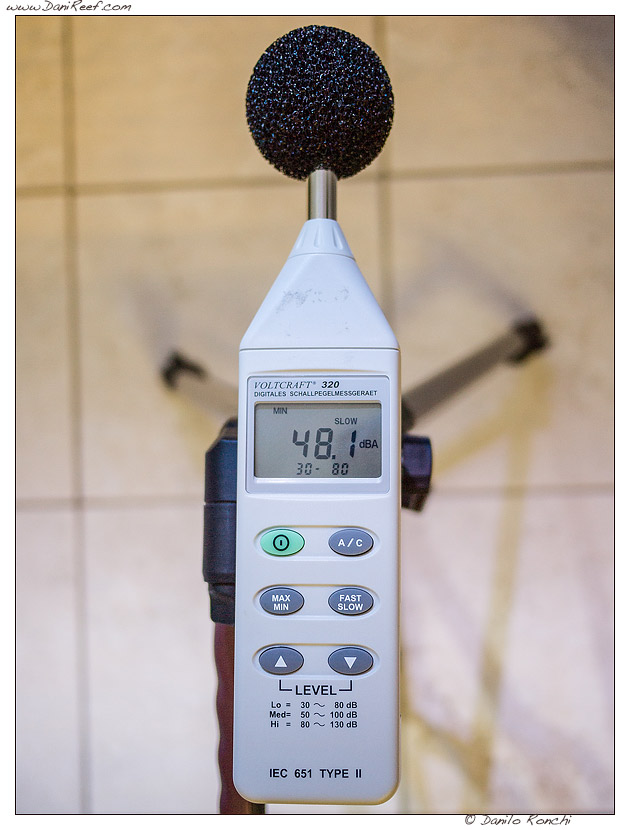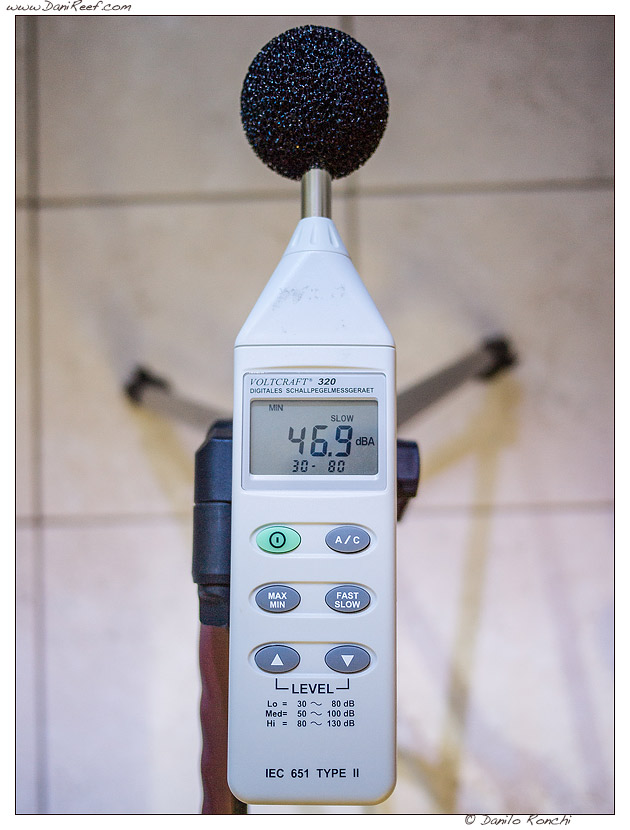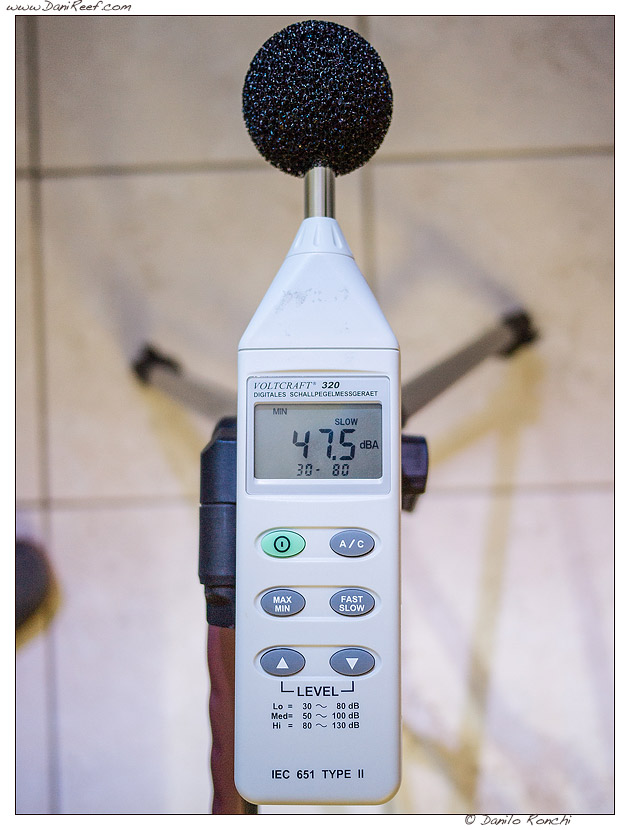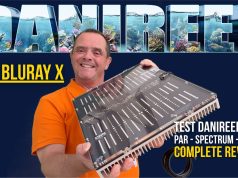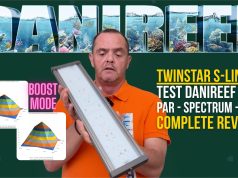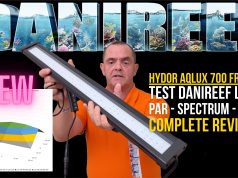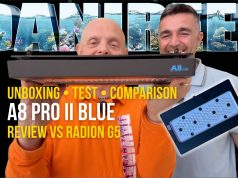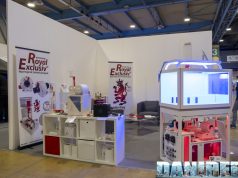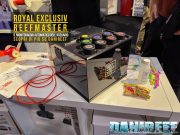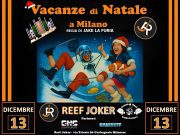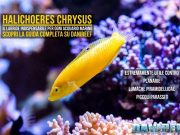We have had the new skimmer Tunze DOC Skimmer 9415 under two different marine aquariums for more than six moths. Today we are here to tell you what it’s happened. Tunze sais to use this skimmer for aquariums up to 1500 liters with little organic load and for aquariums up to 500 liters with very high organic load.

The first thing that we noticed looking at the skimmer is definitely its diameter, is huge! But let us look to all technical features in detail.
Size:
Length: 35 cm
Width: 30 cm
Height: 44 cm
Power Consumption: 15 watts (which is amazing!)
Water flow rate: 1,100 l/h
Air flow rate: 850 l/h
Price: 506,40 €
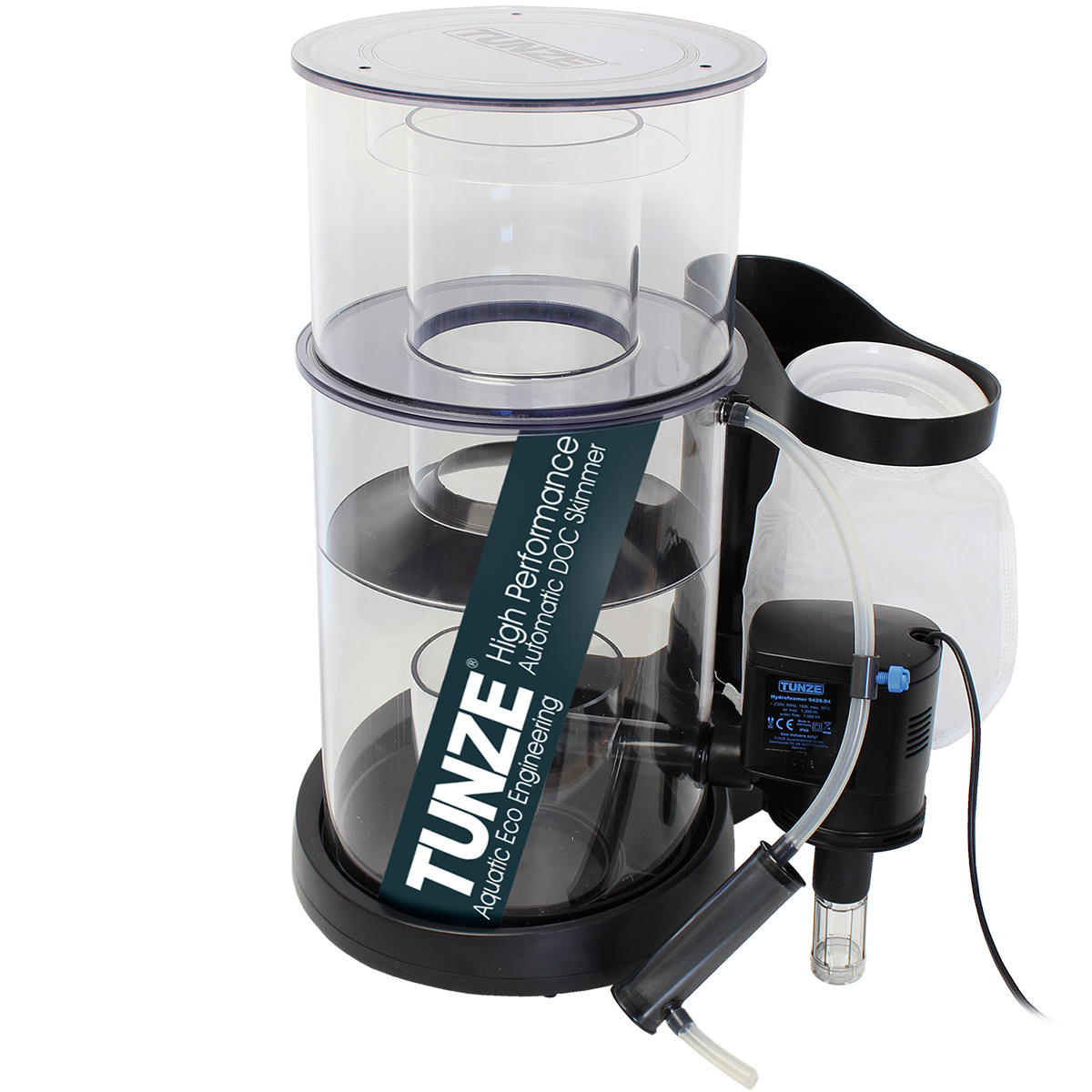
Building
The building of the skimmer Tunze DOC Skimmer 9415 is excellent. There are no burrs and the coupling between the plastic is absolutely perfect.
The working principle is a bit’ different from what we’re used to see, especially for the feature of automatic skimming. The submersible pump is placed outside, a Tunze 9420.04, it takes water from bottom of sump, and puts the water in the body of the skimmer from the bottom, inside a cylinder, where the water find a T diffuser which conveys the flow against the walls of the cylinder itself.
The skimmer body has a diameter of about 20 cm and is about 44 cm high inclusive of glass, for an approximate total volume of 13 liters. Low compared to other skimmers, but huge.
The glass has 20 cm diameter, with 11 cm of inner cylinder. The useful height is 11 cm, and then the glass has a useful capacity of 2.4 liters, which is certainly not little. Obviously fill it up to that level is almost impossible, because before you get sediment in the inner glass that slows down too much skimming making it no efficient.
The support system is very unique. The glass is indeed grafted on a cylinder that flows downwards from the glass itself and that it goes to position just above the body of the skimmer, and then the glass is grafted into the body with a simple support. Easy to enter, because it is only supported, it is equally easy to remove. The tolerances are perfect and the hydraulic seal is guaranteed due to its special construction.
The glass is a very generous size, as we have seen, is surmounted by a cap that has 3 holes for air to escape. It would be desirable that the glass was provided with a valve that can be connected to an external system for the removal of water, for those who had the good luck to have thought about it near their aquarium or to link it to a small tank in the event of prolonged absences.
The pump supplied is the Tunze 9420.04, pump extremely interesting because of its low power consumption of only 15 watts. Noteworthy is the automatic skimming designed by Tunze, called “System Anti Overfoaming“. As you can see in the photos, the skimmer is provided with one hole for the escape of the water in the intermediate chamber that is up to automatically calibrate the skimmer. If the water level, inside skimmer, is below the hole, like it should happen normally, the skimmer will work perfectly without hacks. In the very moment in which the surface tension of water will increase, then the water level will increase inside glass’s neck that will cause the water to overflow through the hole, and in this way also some bubbles will come out and will tend to restore the correct level. If the surface tension were to increase again and it would habe been lead to an excessive increase in the level, yet the hole overflow would drain the excess water while safeguarding the foam. An intelligent system and, for all I know, really unique.
This system Anti Overfoaming joined the single-pump design gives to the Tunze DOC Skimmer 9415 a linearity of trouble free service.
The working scheme is still very simple. Water and air are mixed and released from the bottom where a T shape pipe contributes to the formation of turbulence and to the distribution of the bubbles. The foam rises in the central cylinder, passes the overfoaming chamber and went into the glass. The output water flow is from the bottom according to a second contact column that puts all the water in a postfilter with a mesh of nylon from 300μm. The post filter obviously can be loaded with different filter materials, such as activated carbon or phosphate removers.
There are two holes to help the system with auto calibration, in the central part of the skimmer, where the air tube should be inserted to bring air to the pump. One of the two holes is prepared for use with ozone, which is then placed in the central chamber and then “sucked” by the pump from the other hole. It is not clear why we can not do it directly suck though.
The only way to calibrate the Tunze skimmer is to raise or lower the outer drain pipe, being careful not to put too much water until the holes in the central chamber, since in this case the skimming would collapse. Tunze also recommended that, given the particular construction, to leave the air fully open.
Installation
Installation is simple, because you can not change the pattern of the skimmer to your liking. The water pipes in input and output are in fact fixed, presenting an angle of 90° between them. Normally this is not a problem, but before buying it I suggest you to check if your sump is suitable to host it. You must also be careful to accommodate the outlet pipe and the system of post-filtering if you intend to use it, what I would do without further ado… I think it’s a great place for activated carbon, but also for the PO4 removal.
The output is protected by the post filter and is sufficiently quiet.
Obviously it is possible, as the only degree of calibration, act on the output to obtain a wet skimming, by raising the level, or dry skimming, by lowering it.
Operation
The skimmer is ready to foam when added to the sump and the foam completely fills its body. The foam, as you can see from the video, it is incredibly soapy, with tiny bubbles. Obviously, when you put the glass, bubbles rise in the neck and tend to increase in size, as it is normal. The results, given the small pump Tunze 9420.04, are truly amazing, given the size of the skimmer. From a visual standpoint, skimming looks really good.
Tunze suggests to keep a water level in sump between 10 cm and not higher than the air inlet in the central chamber, relying on the ability of the skimmer self-setting in the best way. I believe that 10 cm are very few, and that for a trivial problem to the return pump is possible to burn the skimmer in no time. I think it would be better to stay a few inches below the holes, say around 18-20 cm.
The skimmer has been tested in two profoundly different aquariums. The aquarium from AndreaNegu, 525 liters, heavily filled with hard corals and a few fish, in which the nutrients have always been very few, and the Aquarium from Jonathan, 540 liters, characterized by a more open layout and more water but also with more fish.
To give you an idea of how the Tunze DOC Skimmer 9415 works we have created the following video showing the skimmate inside the glass after two days of operation, the production of the foam after removing the cup, and then immediately after cleaning.
As you can see the foam is very soapy, the foam is excellent as color and texture after just two days, and in the same way the foam rises in the glass with ease even immediately after cleaning, obviously in this case the bubbles are larger, due to the cleanliness that just occurred.
The Tunze DOC Skimmer 9415 has been tested extensively in two completely different aquariums. At first it was placed in an extremely complex aquarium, beautiful marine aquarium by Andrea Negusanti you see in the next picture, by clicking on which you will be taken to our reportage on his tank of the month.
Our test has not been without problems, leaving the skimmer with its automatic calibration set, and leaving directly on the ground, the skimmer has had many difficulties to work at its best, bringing the SPS corals in a few weeks of use to darken more than they should, with a slight increase in the values of nitrates.
After a couple of months of tests we have decided to move it into the Jonathan‘s marine aquarium which continued our test for at least 6 months.
Here we are started with the previous settings and tried to make it a lot more. We had noticed in Andrea’s tank that the air was sucked erratically, as if sucked in waves, a quick check with our flowmeter has immediately confirmed it. To avoid this problem we proceeded to unhook the air inlet from the skimmer body while leaving it free, we have also put some suckers below the skimmer, with the dual purpose of increasing the space between the pump and the bottom of the aquarium and decrease vibration. Finally we have closed the air litle bit, perhaps getting lost a few pints of air, but overall obtaining a linearity of work.
 In this way, performance has become excellent, the marine aquarium began to improve rapidly and the nutrients have gone to zero, in fact Jonathan told us: “Initially I made the mistake of not adjust the air flow leaving him completely open, getting one foam that did not convince me, to lead my tank to a general impoverishment. Later, by making the right changes to the calibration, the skimmer has started to foam drier, working properly and the response of some corals came quickly after only a week, the colors have become brighter without detecting an increase in nitrates, which indeed was around zero. So I can say that I recommend this skimmer to all, especially to those people who do not like to intervene too much in the continuous calibration, it’s easy to handle and skimming really well“.
In this way, performance has become excellent, the marine aquarium began to improve rapidly and the nutrients have gone to zero, in fact Jonathan told us: “Initially I made the mistake of not adjust the air flow leaving him completely open, getting one foam that did not convince me, to lead my tank to a general impoverishment. Later, by making the right changes to the calibration, the skimmer has started to foam drier, working properly and the response of some corals came quickly after only a week, the colors have become brighter without detecting an increase in nitrates, which indeed was around zero. So I can say that I recommend this skimmer to all, especially to those people who do not like to intervene too much in the continuous calibration, it’s easy to handle and skimming really well“.
Performance and measurements
The manufacturer claims this skimmer for a water flow rate of 1,100 l/h and an air flow rate of 850 l/h. Obviously the numbers depend in large part on many factors, ie the height of the water in the sump and the changing of the column height of the skimmer. The relationship between air and water is then equal to 0.77.
For the particular conformation of the skimmer was not possible to measure the water flow. While we used to measure the air flow with our Sander flowmeter which measures the air from a minimum of 100 l/h to a maximum of 1000 l/h, the measured values must then be increased by 10% to account for losses induced from the device itself.
We then obtained this air flow: 770 l/h, further opening the air we obtained an increase of inlet air, but a lower linearity which, as we have seen, in our tests has led to a minor overall efficiency. The air intake is decreased by about 10% compared to the declared value, but with a total opening the air values were perfectly in line.
The skimmer is quiet enough, especially after having adopted the caveat to suspend him above the common suction cups. We have done three measurements, all at one meter distance from the aquarium and got the following results.
Sound pressure level at 1 meter with all equipments turned on and doors closed: 48.1 dB
Sound pressure level at 1 meter with the only return pump on and doors open: 46.9 dB
Sound pressure level at 1 meter with retunr pump and skimmer running: 47.5 dB
Then the difference in sound pressure measured with skimmer on or off shows about 0.6 dB, a very negligible difference. A very low value that brings the Tunze Doc Skimmer 9415 to considerable values of acoustic comfort, even if this has been obtained by suspending the skimmer on the suction cups. Obviously as you can see from the measurements the aquarium of Jonathan is more noisy than average.
The sound level meter used to measure was been the usual VOLTCRAFT 320, digital sound level meter to IEC 651 Type II that for the effect of the measure is sufficiently reliable. Given the nature of the noise to be measured all measurements were performed with the attenuation curve dBA
Maintenance costs
The pump Tunze 9420.04 is declared to have a very low power consumption of only 15 watts, which translates into 131.4 kwh per year, and an estimated cost of about 34 € if the cost per kwh were to remain stable at 0.26 euro like in Italy. Just under 3 Euros per month, or only 1 euro every 10 days.
conclusions
The skimmer Tunze DOC Skimmer 9415 is a really good skimmer, built in an impeccable manner, offered at a sale price very aggressively given the technical characteristics and performance, equal to about 506,40 euro, so we have to recommend it.
During use it has proved to be very regular, after slightly closing the air, very efficient, with a simple calibration since it is almost fully automatic, extremely quiet, if adding to it the suction cups, and easy to maintain. With appropriate modifications mentioned in the text we have a pretty excellent foam and able to easily handle a marine aquarium with a few live rock like that of Jonathan. We had no particular findings with Andrea’s tank because our changes were made until later. We must emphasize, however, that the performance of air are incredibly identical to those declared, even though we could not measure the water output.
We think it is therefore appropriate for an aquarium populated with SPS corals and fishes around 500 liters, obviously if we talk about aquariums sparsely populated, populated only with fish or a few corals, you may push, in my opinion, on the threshold of 1000 liters.
Let me conclude by repeating once more the Jonathan’s words “So I can say that I recommend this skimmer to all, especially to those people who do not like to intervene too much in the continuous calibration, it’s easy to handle and skimming really well“
Many thanks to Tunze for providing the skimmer tested.







